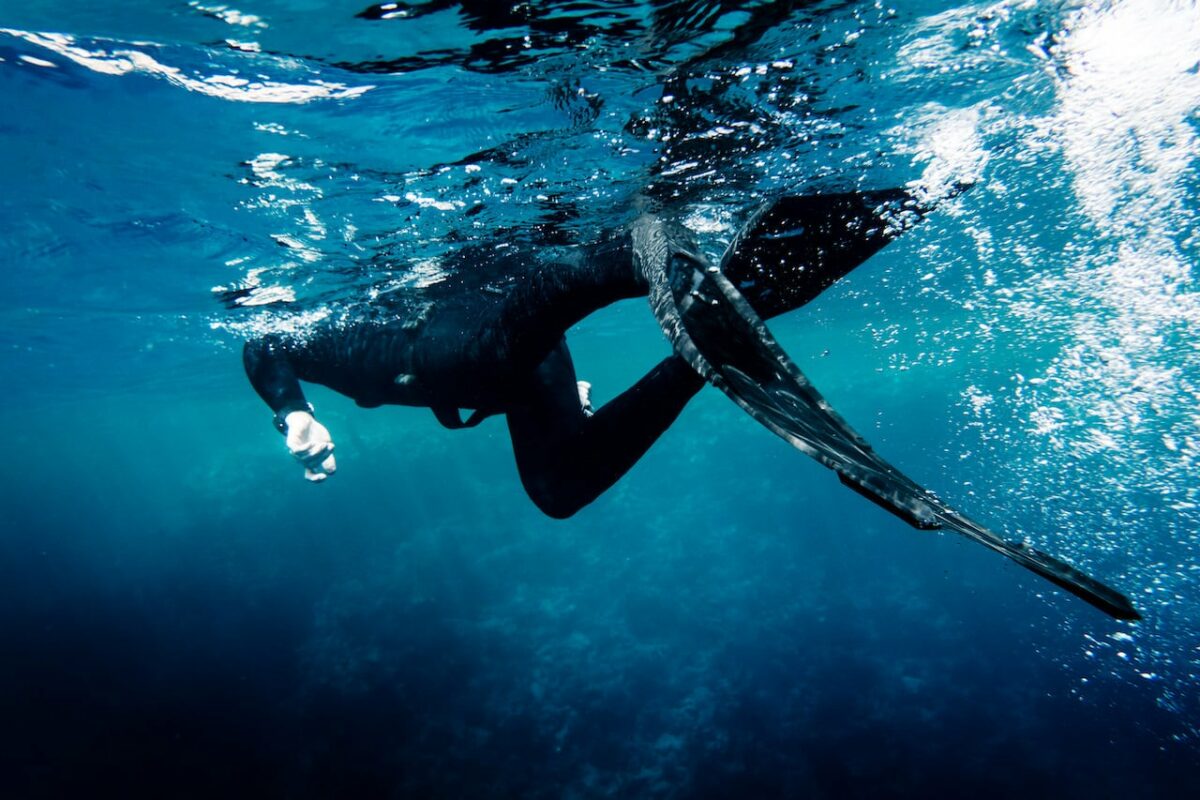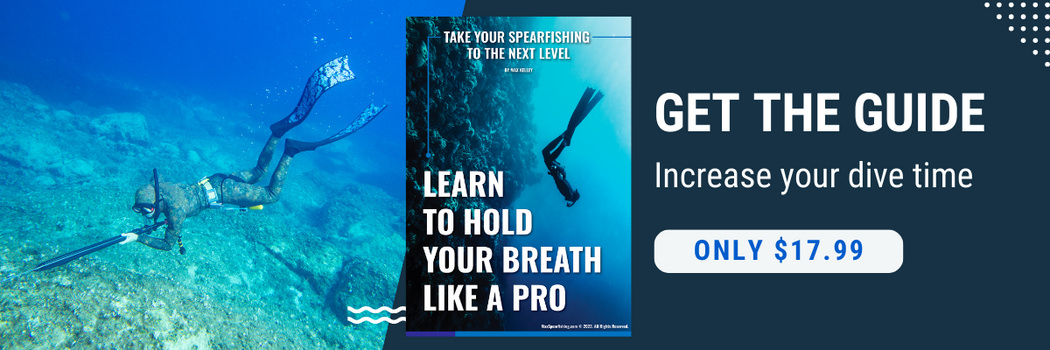No products in the cart.
Fins, Spearfishing Advice
Understand the Different Types of Spearfishing Fins
Many people struggle when it comes to choosing between the different types of spearfishing fins.
By default, freediving fins are the typical go-to for spearfishing, but you will find many varieties of fins to help you swim underwater. When you’re choosing between bodyboarding flippers, snorkeling, scuba, and freediving fins, one thing is sure. They’ve got the same purpose, to help you swim through the water. But depending on the type of spearfishing you’re doing, certain types of fins will perform better than others.
Because each set of fins meet a specific need.
Max Spearfishing is reader-supported. We may earn a small commission for purchases using our links. Click here to learn more.
Understand the Different Types of Spearfishing Fins
When you’re spearfishing, the conditions you’re in will determine what’s best. You’ve got short and stubby fins for bodyboarding. Flexible rubber fins for snorkeling. Powerful and stiff fins for scuba. And then the extraordinary length of the fins used for freediving. Some people say bigger is better, while others like shorter fins to stay agile underwater. I’ve used (and tested all the best spearfishing fins), and here’s my thoughts.
Freediving fins for spearfishing
If you’re looking for the best spearfishing fins, my recommendation would be to buy a pair of freediving fins. They come in plastic, fiberglass, or carbon fiber, and you’ll immediately recognize freediving fins when you see them, because they’re so long.
They’re actually designed to be long, as this gives the maximum surface area which makes freediving fins very efficient for spearfishing. Small kicks will send you speeding through the water without burning excess energy (and your oxygen when you’re underwater). Which makes them idea for swimming long distances to your spearfishing hunting grounds, or diving at depth. Freediving fins are what most people buy once they get serious about their spearfishing gear.
Though the downside is that the fin length will reduce your ability to maneuver underwater. Not ideal if you’re spearfishing on a reef, in shallow water or in the wash of the waves. Where they win out though, is that freediving fins will get you to the bottom faster, so you can cover more distance underwater in less time. Some people find it difficult to swim with freediving fins at first, because they are stiffer than you think. And it takes time to build the muscles you need to kick along.
But they’re a worthwhile investment that’ll help you take your spearfishing game to the next level. I’ve written a full buying guide to the best spearfishing fins, but my overall favorite and recommendation for most people, is this pair from Mares.
No products found.
Key features of freediving fins
- The longest fins you can buy
- Stiff blades give the greatest power
- Hard to maneuver in tight conditions
- You can dive to hunting depth faster
Snorkeling fins for spearfishing
The fins most people start spearfishing with are snorkeling flippers. Designed to be light and flexible, these types of spearfishing fins are versatile and will suit most conditions. Ideal if you’re new to the sport and not wanting to invest a lot of money. They will be good enough to help you swim around in the water, and they’ll likely be the most comfortable too.
Shorter and more flexible than a pair of freediving fins, you’ll find styles ranging from 20-inches to 26-inches (50cm to 66cm) in length. Plus, they’re pretty cheap compared to other fins. My advice for beginners who are not sure about spearfishing, is to start with a more budget-friendly pair of snorkeling fins.
You’ll be able to happily kick around on the surface, and dive shallower reefs, you simply slip them on and you’re good to go. Snorkeling fins come in variations that have an open heel (to wear with booties) or a full foot pocket, my go-to recommendation for this fin type is a pair like these from U.S. Divers.
No products found.
Key features of snorkeling fins
- Generally the cheapest fins to buy
- Ideal for swimming on the surface
- Easy and comfortable to wear
- Good choice for beginners
Scuba fins for spearfishing
Scuba fins are what most people think of when you imagine flippers. Designed to provide a powerful thrust, they’re much longer than snorkeling fins, but not as long as freediving fins. But they’re far thicker than both. Scuba fins are ideal when wearing all your heavy dive equipment to push through the water. Some come with channels for better flow and split fin designs to reduce fatigue on longer dives.
You’ll get scuba fins with full foot pockets, but most will have an open heel so that you can wear them with booties. They range from around 25-inches to 30-inches (64cm to 76cm) in length. Consider these fins if you’re spearfishing in deep water with rough conditions. Or even a strong current. The rigid fins will help you to swim against the current.
My only caution with this particular type of find for spearfishing, is if you’re doing long surface swims. The rigid fin blades, combined with the angle of your ankle (while wearing booties), has always felt uncomfortable for me when swimming on the surface. I’d recommend these if you’re diving right off the boat, or in rough conditions.
No products found.
Key features of scuba fins
- Longer and thicker than snorkeling fins
- Gives you a more powerful kick
- Stiffness can be a problem on the surface
- Ideal in rough conditions or strong currents
Bodyboarding fins for spearfishing
The shortest and stockiest fins are those created for bodyboarders. Designed for durability in rough conditions (i.e. surfing), the thick fins provide an incredible amount of thrust. Ideal for speeding up and catch a wave, which is what they’re designed for. While being short enough to not get in the way while you’re bodyboarding.
For a quick burst of power, bodyboarding fins are a smart buy. Many of my mates growing up would use these shorter fins when we were lobster hunting around the reef. We didn’t have far to swim out to the hunting grounds, and the good maneuverability allowed us to get in close to the rocks and the wash, without getting washed over the rocks. Because of the waves and rough conditions, bodyboarding fins use a fin saver to attach them to your ankle. So you don’t lose them in the surf if they happen to slip off.
Bodyboarding fins range from about 10-inches to 15-inches (25cm to 40cm) in length, so they’re some of the shortest you can buy. The downside is they’re less efficient than longer flippers, so you’ll burn more energy as you kick. I’d only ever use a pair of these in shallow, rough water for spearfishing.
No products found.
Key features of bodyboarding fins
- Shortest and thickest fins
- Ideal for short power bursts
- Highly maneuverable
- Burns more energy to kick
Which of the different types of spearfishing fins are best?
Ultimately, it’s a choice you’ll need to make. There are many different types of spearfishing fins you can buy before you get in the water. From bodyboarding fins to scuba or freediving flippers, remember that they’re all tools. Pieces of spearfishing gear designed to do a specific job. That is, helping you swim underwater as you hunt your next fish. What you need to do, is choose the fins that best suit the conditions you’ll be spearfishing in.
If you’d like to compare all your different options, definitely take a moment to check out our recent buyers guide to the best spearfishing fins. Or if you want to get started right away, my advice would be to pick up one of the following.
For real beginners: Get the U.S. Divers Proflex FX Fin (they’re cheap, comfortable, and a good fin as you’re learning how to spearfish).
For everyone else: Get the Mares Razor Pro (they’ll help you immensely as you push into deeper water, and spearfish more efficiently).
Happy spearin’


